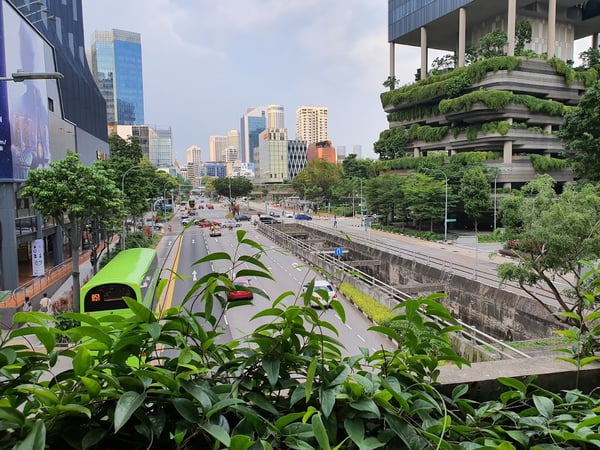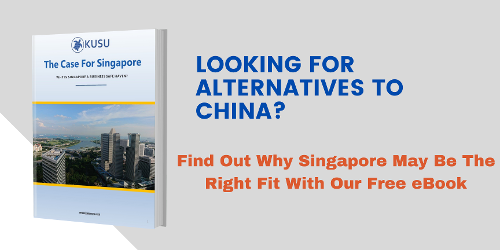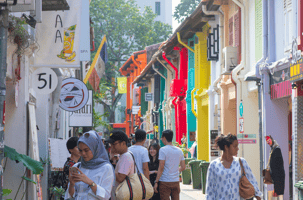On the 21st of August, 2022, at the Institute of Technical Education (ITE), Prime Minister Lee...
Singapore's Prime Minister Succession
The Financial Times reported last week that Singapore’s Prime Minister, Lee Hsien Loong, has announced his apparent successor: the current Finance Minister Lawrence Wong. Minister Wong has received support from Prime Minister Lee and fellow ministers to lead the “Fourth Generation,” a group of young People’s Action Party (PAP) ministers lined up to take the party reins.
Evidently, the PAP has been at the forefront of Singapore politics. Under their watch, Singapore has been transformed into a developed, high-income country. In this week’s article, we will be discussing the history of Singapore prior to independence, the PAP’s history, the PAP’s role in political stability in Singapore, and the PAP’s role in the economic success of Singapore.

Background
The BBC traces the beginning of modern Singapore to the early 19th century with the arrival of Sir Stamford Raffles who established a trading port on the island. By 1832, Singapore became the capital of the Straits Settlements, which also included Malacca and Penang. Save for the years 1942 and 1945 when it fell under Japanese control, the British held onto power until Singapore gained self-governance in 1959.
The PAP won the first official general election in 1959, having won the 1955 general election, with Lee Kuan Yew becoming the first prime minister of Singapore as the Secretary-General of the PAP. The PAP won 43 out of 51 contested seats.
The PAP was formed in 1954 and ran on a manifesto built around independence, merging with the Federation of Malaysia, multi-racialism, and equality according to HISTORYSG itself. Individuals key to the formation of the PAP include Lee Kuan Yew, Toh Chin Chye, Goh Keng Swee, C. V. Devan Nair, S. Rajaratnam, Abdul Samad Ismail and Fong Swee Suan. All represented different facets of Singaporean society and different ethnic communities.
People’s Action Party
Toh Chin Chye went on to become Deputy Prime Minister, Minister for Health, and Minister for Science and Technology. Goh Keng Swee became Deputy Prime Minister, Minister for Education, Minister for Defence, Minister for Finance, and Minister for the Interior and Defence. Devin Nair became President, whereas S. Rajaratnam became Senior Minister, Deputy Prime Minister, Minister for Foreign Affairs, and Minister for Labour.
According to AsiaOne, these individuals formed the first Central Executive Committee (CEC) of the PAP which continues to hold significant political power, with the Secretary-General of the PAP CEC traditionally serving as the Prime Minister of the country. The aforementioned list of highly accomplished individuals also formed the first generation of PAP leaders.
Major players of the second and third generation include Goh Chok Tong (former Prime Minister, Deputy Prime Minister, Minister for Defence, Minister for Health, and Minister for Trade and Industry) and Lee Hsien Loong (current Prime Minister and former Deputy Prime Minister, Minister for Finance, and Minister for Trade and Industry).
Political Stability
Singapore eventually joined the Federation of Malaya in 1963; however, not two years later, Singapore pulled out of the Federation of Malaysia following serious political and ethnic tensions, officially becoming an independent country.
Amidst this backdrop of political and ethnic tensions, the PAP has been able to foster a system of political stability in Singapore. The Council on Foreign Relations writes “Accordingly, the government has, over the years, engineered a range of policies to promote social stability, including racial quotas in housing and racial representativeness requirements for election candidates.”
The PAP also invested heavily in creating strong, corruption-free legal-political institutions. As a result, Singapore is ranked third in 2019 on the World Economic Forum’s Global Competitiveness Index in terms of property rights protection. It is also ranked first on the World Bank Ease of Doing Business rankings in terms of contract dispute resolution, according to the Social Market Foundation.
Economic Success
The Singapore economy following independence and the Singapore economy now are virtually night and day. ThoughtCo writes “Much of the city-state's 3 million people were unemployed. More than two-thirds of its population was living in slums and squatter settlements on the city's fringe… Singapore lacked natural resources, sanitation, proper infrastructure, and adequate water supply.”
Singapore’s lack of natural resources led the PAP to adopt an economic development strategy built around barrier-free trade, industrialisation, investment in infrastructure, and investment in human capital. Singapore pursued barrier-free trade as a means to attract foreign direct investment to promote local labour-intensive industries, states the Council on Foreign Relations.
Conclusion
Under PAP guidance, Singapore has been transformed from a country with limited prospects to a high-income country with an annual GDP of USD 300 billion, the third-highest life expectancy, among the best infrastructure, and among the best education systems worldwide. High political stability and resounding economic success makes Singapore the perfect environment for businesses to thrive.
-1.jpg?width=146&height=50&name=Kusu%20(1)-1.jpg)

.png?height=200&name=Untitled%20design%20(27).png)
.png?height=200&name=Untitled%20design%20(7).png)
